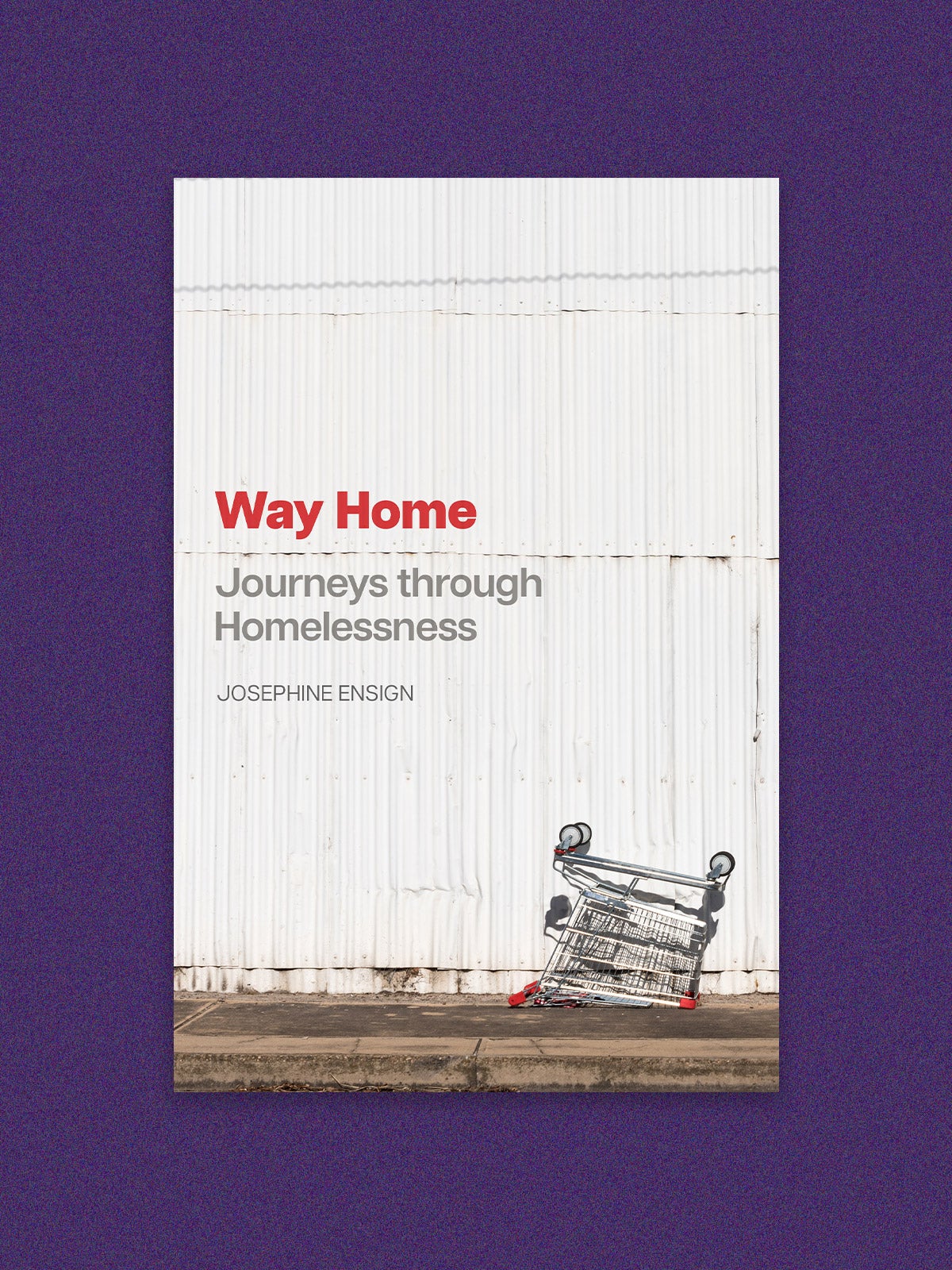
Book
Way Home invites the U.S. to view its homelessness crisis up close
The news that homelessness in the United States set another record in 2024 landed in Seattle with muted resignation. This region marked its own bleak milestone last year: 16,000 people living on the streets and in shelters on one night, the highest ever recorded, according to a countywide estimate.
The figures are subject to shifting methodologies and variations in weather. But they show a clear, worsening trend, including in one of America’s most progressive cities. The visibility and intractability of people living on the streets have dominated civic life in Seattle for a decade, blending with rage over petty crime and despair over housing costs—a set of overlapping crises that politics has seemed powerless to change.
In Way Home: Journeys Through Homelessness, author Josephine Ensign acknowledges the “palpable mixture of compassion and frustration” with which many in Seattle and across the U.S. have watched this modern era of homelessness unfold. She recognizes that most readers encounter homelessness from a distance—glimpses into alleys, glances on the bus, flashes of color signifying tents threaded into urban greenways. These can elicit overpowering emotion but leave a void of information with which to process it.
Ensign, a nurse and academic, aims to fill this void with 300 pages detailing the lives of people on Seattle’s streets and years of attempts by policymakers to alter their circumstances. The city, fourth in the U.S. behind New York, Los Angeles, and Chicago in the number of people without stable housing, has earned its status as a microcosm of American homelessness. Enchanted by Seattle’s liberal ideals when she moved there decades ago, Ensign poses a challenge to this identity: “How do we reconcile the fact that Seattle is both a progressive, hopeful city and a place in which homelessness is such a large, growing, and deeply entrenched problem?”
We see how life on Seattle’s streets corrodes the body and mind through unrelenting displacement, danger, and exclusion by mainstream society.
Perhaps no story in Way Home tackles this question more directly than that of Lisa Vach and Travis Berge, a couple whose lives ended in a spasm of violence at a point where the city’s homelessness crisis converged with its tradition of radical activism. As Ensign stitches together their stories through interviews and public records, it’s impossible to ignore the extent to which Berge conformed to the least generous stereotypes of unsheltered people. A one-time street musician, his methamphetamine use, shocking behavior, and frequent arrests had made him a fixture of TV news coverage. Vach had worked low-paying jobs around Seattle, including in the gift shop of a tour company, but by the start of the COVID-19 pandemic in 2020 was unemployed and staying in a downtown shelter.
Like many Seattleites living on the streets that summer, they gravitated to an encampment in the Capitol Hill neighborhood, where activists were protesting police violence. Mutual aid and security volunteers struggled to meet the pair’s complex needs. Berge’s meth use sent him into “violent rampages.” His abusive relationship with Vach was marked by “frequent and escalating physical fights.”
Their spiral culminated in the fall, as protests faded and the couple stayed in the scattered remnants of the encampment. Berge murdered Vach there, then drowned in a nearby tank filled with bleach solution during a standoff with police. (It’s not clear whether he died by suicide or accident.) The story leaves readers awed at how the couple’s personal challenges, the evaporation of affordable housing, the pandemic’s upheaval, and the confusion of the protests compounded to produce this degree of horror.
The contrast between Seattle’s professed ideals and the suffering on its streets reappears and grows more complicated throughout Way Home. The city was among the first in the country to embrace “Housing First,” a philosophy of moving chronically homeless people into permanent homes before addressing their mental illness or substance use. It was also among the first to provide safe, legal parking areas for people living in their vehicles.
But, we learn Seattle has more ordinances that criminalize living in vehicles than anywhere else in Washington state. And that a 1996 law targeting teenage runaways and school truants made Washington the nation’s leading jailer of children. We see how life on Seattle’s streets corrodes the body and mind through unrelenting displacement, danger, and exclusion by mainstream society.
Take the case of John T. Williams, a First Nations Ditidaht woodcarver whose grandfather moved to Seattle in 1900. Williams spent decades on the city’s streets. By 50, he was limping, partially blind, and deaf in one ear from the effects of living outdoors and heavy drinking. In 2010, Williams was living in a subsidized apartment where his alcoholism wasn’t disqualifying, thanks to the Housing First policy. One day, he met with his brothers in a park and agreed to return to Canada with them. After stopping at his apartment, he was returning to the park when a police officer shot him dead in an intersection. The officer, alarmed by a knife Williams was using to shape a piece of cedar into an eagle figure, had shouted a warning that Williams seemingly could not hear.
Homelessness defies most attempts to contain its complexity. Almost no one can hold all of it, the way it braids macroeconomic forces with the vicissitudes of a person’s life. Ensign—equipped with decades of experience as a nurse who has worked with homeless people, well-honed skills as an academic researcher, and the memory of her own homelessness during several months in her youth—has the perspective to guide us.
But if she has ideas that could help us find patterns in the stories she collects—and from them, identify better solutions—she keeps them mostly to herself. Way Home promises to show how the Seattle area’s “innovative local solutions can be scaled up nationally.” But in Ensign’s telling, the city looks less like a national model and more like a case study of how well-intentioned efforts are undermined by something that floats just beyond our perception.
How do we make sense of the intractability of homelessness in a city that professes to care so much? Ensign points out that conservatives have an emotionally satisfying answer: Progressivism itself is the culprit. But the stories in Way Home hint at an alternative: an American reflex to punish, avoid, and exclude that overwhelms any countervailing ideal.
Book cover: John Hopkins University Press


